The Forthcoming Trials.
Page 11

Page 12

Page 13
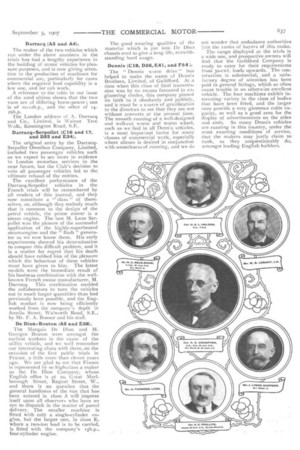
Page 14
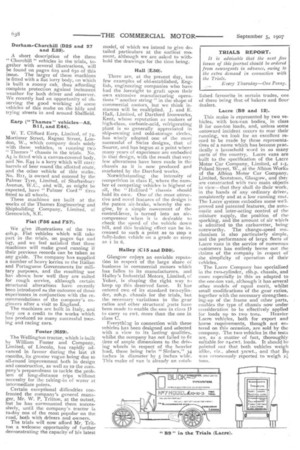
Page 15
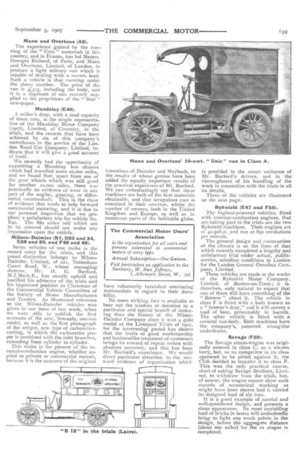
Page 16
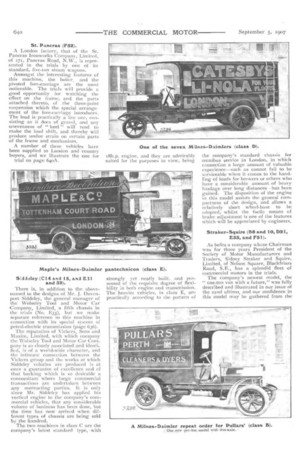
Page 20
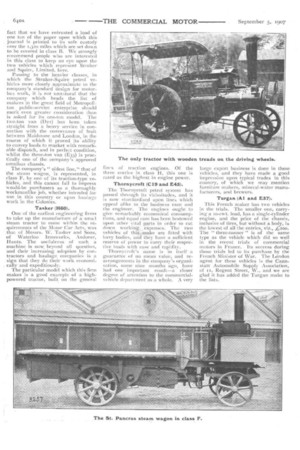
Page 21
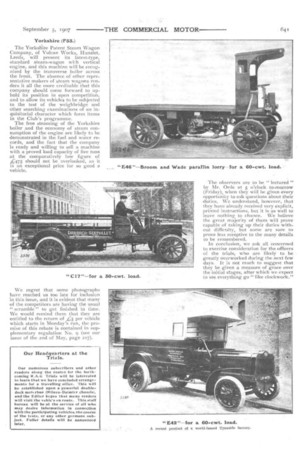
If you've noticed an error in this article please click here to report it so we can fix it.
Preparations for the Start from Thornycroft's Yard, at Chiswick, on Monday morning.
Tabulated particulars of all the competing vehicles were published in this journal two weeks ago. We therefore content ourselves to-day by making brief references to each of the entrants, some of whom, .unfortunately, have not been able to complete the bodies and loads of their vehicles in time to allow the inclusion of photographs. The assembly of the vehicles takes place to-day (Thursday), at Thornycroft's yard, Chiswick, of which place we give a view herewith.
We desire to remind all who are in(erested in the trials, of the inaugural dinner which is to take place on Saturday, at the Trocadero Restaurant. Tickets are Li is. each, inclusive of wines, and they can be ordered from the Secretary of the Club, 119, Piccadilly, W., up to noon to-morrow {Friday). This send-off function will be interesting and historic.
The Judges.
The Judges' Committee includes many well-known men, as will be gathered from the photographs which we reproduce on the next two pages. It is hoped that it may be possible to keep up a continuous rota of four. Armstrong.-Whitworth (E42).
The name of "Armstrong-Whitworth " is more generally associated with heavy ordnance and war-like material than with commercial-motor vehicles. The reputation of the cotnpany will, however, ensure that only the best of materials and workmanship are embodied in the structure of such vehicles as are turned out at its works.
One three-ton chassis, fitted with an open, tilt-van body, will defend the reputation of this North of England company during the trials, and an illustration of this will be found on page 641.
Atkey-Gimson (E36).
As far as the system of mechanical transmission is concerned, this vehicle is, perhaps, the most distinctive. It combines some of the best points of the single-chain and of the internalgear types of drive. A reference to pages 627 and 628 of this issue will show this machine illustrated and described by one of our representatives who recently visited Nottingham and Leicester for that purpose. A large amount of clearance between road surface and mechanism is one of its strong claims for country or Colonial work, for which purpose it was originally designed. The arrangement of the steering connecting-rods is worth noting : it affords good protection to these vital, yet often much-exposed, parts, which is most desirable in any circumstances, and for export vehicles in particular. AveHag (E46).
Of all the vehicles which are propelled by internal-combustion only two of those in the trials are arranged to run on paraffin. One of these is the " Broom and Wade," three-ton wagon. All the generally-accepted lines of design have been cast aside by its builders. It embodies a single-cylinder, horizontal engine with a cylinder 8 inches in diameter and with a pistonstroke of like measurement. Simplicity and the least possible number of parts can well be claimed for this machine, which is stoutly built and yet is not unduly heavy. Its weight unladen is 2 tons 19 cwt. : fitted with a lorry body, and loaded with baulks of timber, its running weight during the trials will be 5 tons 19 cwt. T. C. .Aveling and Company, Limited, of Central House, New Street, Birmingham, is the entrant, and this company will control a
large portion of the output of the works at High Wycombe_ The vehicle has Tangent-spoke wheels fitted, by Tangent Wheels, Ltd., of Grove Road, Balham, The B.T.H. Petrol-Electric (E35).
The only example of petrol-electric transmission is the " B.T.H." system applied to a Wolseley-Siddeley 3-ton chassis. This system has nn* fully made cle.ir its capabilities for smooth and silent running. Its long demonstration runs—from Rugby to Frome (over the Malvern Hills), and from London to Blackpool—have previously been recorded in these pages. A similar chassis, equipped with the " B.T.H." system is now in regular omnibus service in London, and its ease of manipulation is a point to be envied by many mo:orbus constructors. We understand that the listed price of
1,29-1 is purely nominal. Burrell (}158.
The first constructor of a miniature traction-engine to enter for the trials was Charles Burrell and Sons, Limited, of Thetford, Norfolk, and this machine will be the only one in its class to have wooden treads fitted to the driving-wheels. The machine embodies the best principles of traction-engine design, but in every way complies with the requirements of the Motor Car Acts, and it has proved itself on many occasions to possess more than the necessary hauling capacity to deal satisfactorily with a considerably larger load than will be put behind the drawbar on the occasion of the present trials, no matter how steep and long the hills may prove when the cavalcade gets on the road between Manchester and .Huddersfield.
This company did not, for many years, turn its attention to the construe. tion of tractors under the conditions that were introduced by the Act of 1896, although numerous experiments were conducted, as its technical directors were convinced that no useful pur. pose would be served until the three-ton tare limit was abandoned. The satisfactory progress that has been made (luring the past two years indicates how closely the necessities of the case were understood by them.
Commercial Cars (E43).
Much originality has been displayed in the design and construction of the vehicles known as " Cotnercars," built by Commercial Cars, Limited, of Luton. This is especially true of the gearbox, in which all the gear-wheels are constantly in mesh and the gear. changes are effected through "dogs which bite with a click," to use an expression cointd by this company. The casual observer's first impression of one of these gearboxes is " how complicated; it must take a lot of keeping in order." "Nothing of the kind," says the maker, and, to prove his contention that the box is capable of being worked constantly without giving trouble, or without any attention save the regular replenishment of oil and grease, "THE COMMERCIAL MOTOR," at the request of the company, has sealed several boxes in such a manner that no repair or adjustment could be effected without disturbing the • seals. About a dozen gearboxes have been most effectually sealed, and it Is not anticipated that there will be any necessity to break the seals 'before the next Commercial Motor Exhibition at Olympia, when the internal parts of the box will be examined.
Chests of tea form the load of the three-ton " Cornercar " lorry during the trials, and the " jaunt " should prove an easy one for it. Darracq (A3 and A4).
The maker of the two vehicles which run under the above numbers in the trials has had a lengthy experience in the building of motor vehicles for pleasure purposes, and is now giving attention to the production of machines for commercial use, particularly for cases where the required load capability is a low one, and for cab work.
A reference to the table in our issue of the 22nd ultimo shows that the two vans are of differing horse-power ; one is of to-12h.p., and the other of 4I 6h.p.
The London address of A. Darracq and Co., Limited, is Walnut Tree Walk, Kennington Road, S.F.
Darracq-Serpoliet (C16 and 17, and D22 and E34).
The original entry by the DarracqSerpollet Omnibus Company, Limited, included two passenger vehicles such as we expect to see more in evidence in London motorbus services in the near future, but the Club's decision to veto all passenger vehicles led to the ultimate refusal of the entries.
The excellent performance of the Darracq-Serpollet vehicles in the French trials will be remembered by all readers of this journal, and they now constitute a " class " of themselves, as, although they embody much that is common to the design of the petrol vehicle, the prime mover is a steam engine. The late M. Leon Serpollet was the pioneer of the successful application of the highly-superheated steam-engine and the " flash " generator as we now know them. His early experiments showed his determination to conquer this difficult problem, and it is a matter for regret that his death should have robbed him of the pleasure which the behaviour of these vehicles must have given to him. The latest rimdels were the immediate result of his business combination with the wellknown French motor manufacturer, M. Darracq. This combination enabled the collaborators to turn the vehicles out in much larger quantities than had previously been possible, and the English market is now being efficiently worked from the company's depot in Amelia Street, Walworth Road, SE., by Mr. F. A, Bonsor and his staff.
De Dion-Beaten (A2 and E38).
The Marquis De Dion and M. Georges Bouton were amongst the earliest workers in the cause of the utility vehicle, and we well remember our interesting chats with them, on the occasion of the first public trials in France, a little more than eleven years ago. We are glad to sue that France is represented by so high-class a maker as the De Dion Company, whose English office is at to, Great Marlborough Street, Regent Street, W., and there is no question that the general handiness of the van that has been entered in class A will impress itself upon all observer:, who have an eye to dispatch in the matter of parcel delivery. The smaller machine is fitted with only a single-cylinder engine, but the larger one, in class E, where a two-ton load is to be carried, is fitted with the company's 'P.p., four-cylinder engine.
The good wearing qualities of the material which is put into De Dion chassis tend to give a long life, notwithstanding hard usage.
Dennis (C18, D26, E41, and F54).
The " Dennis worm drive " has helped to make the name of Dennis Brothers, Limited, of Guildford. At a time when this class of final transmission was by no means favoured in engineering circles, this company pinned its faith to it absolutely and publicly, and it must he a source of gratification to the directors to see that they are not without converts at the present time. The smooth running of a well-designed and well-cut worm and worm wheel, such as we -find in all Dennis vehicles, is a most important factor for many 'classes of commercial work, especially where silence is desired in conjunction with smoothness of running, and we do
not wonder that ambulance authorities join the ranks of buyers of this make.
The range displayed at the trials is a wide one, and prospective owners will find that the Guildford Company is ready to cater for their requirements from 3o-cwt. loads upwards. The construction is substantial, and a satisfactory degree of attention has been paid to general fittings, which so often cause trouble in an otherwise excellent vehicle. The four machines exhibit interesting variety in the class of bodies that have been fitted, and the larger ones provide a very generous cubic capacity, as well as a good area for the display of advertisements on the sides and ends. So many Dennis vehicles are running in this country, under the most exacting conditions of service, that the makers may justly claim to rank, as they unquestionably do, amongst leading English builders.
Durham-Churchill (D25 and 27 and E459).
A short description of the three " Churchill " vehicles in the trials, together with several illustrations will be found on pages 629 and 630 of this issue. The larger of these machines is fitted with a fiat lorry body, on which is built a roomy cab, thus affording complete protection against inclement weather for both driver and observer. We recently had an opportunity of observing the good working of some vehicles of this make on the hilly and trying streets in and around Sheffield.
Earp (" Thames " vehicles—A5, B11, and E44).
W. T. Clifford Earp, Limited, of 74, Mortimer Street, Regent Street, London, W., which company deals solely with these vehicles, is sunning two " Thames " chassis in the trials. No. As is fitted with a canvas-covered body, and No. E44 is a lorry which will carry barrels of beer round the allotted route, and the other vehicle of this nveke. No. 131 t, is owned and entered by the Palmer Tyre, Limited, of Shaftesbury Avenue, W.C., and will, as might be expected, have "Palmer Cord" tires fitted to all wheels.
These machines are built at the works of the Thames Engineering and Shipbuilding Company, Limited, of Greenwich, S.F.
Fiat (F56 and F57).
We give illustrations of the two 40h.p. Fiat vehicles which will take part in the trials, on pages 642 and 647, and we feel satisfied that these machines will make good running if their previous records can be taken as any guide. The company has supplied a number of heavy lorries to the Italian and Portuguese Governments for military purposes, and the resulting use has shown how well they are suited for rough service, although certain structural alterations have recently been introduced as the outcome of those experiences in conjunction with the recommendations of the company's engineers after a visit to England.
The machines are built in Italy, and they are a credit to the works which has produced so many successful touring and racing cars.
Foster (H59).
The Wellington tractor, which is built by William Foster and Company, Limited, of Lincoln, has rapidly advanced in favour during the last 18 months, its greater vogue being due to all-round improvement both in design and construction, as well as to the company's preparedness to tackle the problem of long-distance trips without necessity for the taking-in of water at intermediate points.
Certain exceptional difficulties confronted the company's general manager, Mr. W. P. Tritton, at the outset, but he has surmounted them successively, until the company's tractor is to-day one of the most popular on the road, both with drivers and owners.
The trials will now afford Mr. Tritton a welcome opportunity of further demonstrating the capacity of his latest model, of which we intend to give detailed particulars at the earliest mce ment, although we are asked to withhold the drawings for the time being.
Hall (E50).
There are, at the present day, too few examples of old-established, English, engineering companies who have had the foresight to graft upon their own extensive manufacturing operations " another string " in the shape of commercial motors, but we think instances will be multiplied. J. and E. Hall, -Limited, of Dartford Ironworks, Kent, whose reputation as makers of high-class, carbonic-acid, refrigerating plant is so generally appreciated in ship-owning and cold-storage circles, has wisely adopted one of the most successful of Swiss designs, that of Saurer, and has begun at a point where many years of experience are embodied in that design, with the result that very few alterations have been made in the chassis as it is now produced and inarketed by the Dartford works.
Notwithstanding the intensity of competition in class E, 'where the number of competing vehicles is highest of all, the " Hallford " chassis should hold its own. One of the most attractive and novel features of the design is the patent air-brake, whereby the engine, by a simple movement of the control-lever, is turned into an aircompressor when it is desirable to check the speed of the vehicle down hill, and this braking effect can be increased to such a point as to stop a fully-laden vehicle on a grade as steep as i in 6.
Halley (C15 and D20).
Glasgow enjoys an enviable reputation in respect of the large share of business in commercial motors which has fallen to its manufacturers, and Halley's Industrial Motors, Limited, of Yoker, is shaping the right way to keep up this deserved fame. It has entered two of its standard two-cylinder, 2oh.p. chassis for the trials, but the necessary variations in the gear ratios and other structural parts have been made to enable the one in class D to carry so cwt. more than the one in class C.
Everything in connection with these vehicles has been designed and selected with a view to its lasting qualities, whilst the company has not failed to fit tires of ample dimensions to the driving wheels in respect of the heavier load, these being twin " Sirdars," 34 inches in diameter by 5 inches wide. This make of van is already an estab ished favourite in certain trades, one of these being that of bakers and flour dealers.
Lacre (B9 and 12).
This make is represented by two vehicles, with box-van bodies, in class B for one-ton loads, and, unless some untoward incident occurs to mar their running, we look for an excellent record to be made by these representatives of a name which has become practically a household word in so many parts of the country. Lacre vans are built to the specification of the Lacre Motor Car Company, Limited, of 1-5, Poland Street, W., at the Albion Works of the Albion Motor Car Company, Limited, Scotstoun, Glasgow, and they are constructed with two main objects in view—that they shall do their work, in the hands of any ordinary driver, consistently and at a low running cost. The Lacre system embodies some wellproved and patented features, the automatic and inter-acting control of the mixture supply, the position of the sparking, and the amount of air which is admitted to the carburetter, being noteworthy. The change-speed mechanism is also particularly simple, and the performance of large fleets of Lacre vans in the service of numerous customers has entirely borne out the claims of the company in respect of the simplicity of operation of their vehicles.
The Lacre Company has specialised in the two-cylinder, 16h.p. chassis, and more especially in this as adapted to the one-ton van, although it has several other models of equal merit, whilst small modifications of the gear ratios, together with the necessary strengthening-up of the frame and other parts, enables the type of chassis now under consideration to be effectively applied
for loads up to two tons. Heavier Lacre vehicles, both for export and home requirements, though not entered on this occasion, are sold by the company. The two vehicles in the tests are, as a matter of fact, thoroughly suitable for 24-cwt. loads. It should be pointed out that both vehicles weigh alike, viz., about 32cwt., and that B9 was erroneously reported to weigh 2i7, tons. Mann and Overtons (A6).
The experience gained by the run-fling of the " Unic " motorcab in thi.•,, country, and in France, has led Messrs. Georges Richard, of Paris, and Mann and Overtons, Limited, of London, to produce a light delivery van which is capable of dealing with a to-cwt. load. Such a vehicle is that running under
the above number. The price of the van is ,'315, including the body, and it is a duplicate of one recently supplied to the proprietors of the "Star" newspaper.
Maudslay (E40).
it miller's dray, with a load capacity of three tons, is the single representative of the Maudslay Motor Company (19o7), Limited, of Coventry, in the trials, and the records that have been achieved by six of this company's motorbuses in the service of the London Road Car Company, Limited, indicate that it will give a good account of itself.
• We recently had the opportunity of examining a Maudslay bus chassis which had travelled some 2o,000 miles, and we found that, apart from one of the gear wheels which was still gcod for another to,000 miles, there was practically no evidence of wear in any part of the engine, gearing, or differential countershaft. This is the class of evidence that tends to help forward commercial motoring, and it is due to our personal inspection that we prophesy a satisfactory trip for vehicle No. E4o. The 88o miles odd which are to be covered should not make any impression upon the vehicle.
Milnes-Daimler (67, D23 and 24, 628 and 29, and F48 and 49).
Seven vehicles of one make is the record entry for the trials, and this proud distinction belongs to MimesDaimler, Limited, Limited, of 221, Tottenham Court Road, W,, whose managing director, Mr. H. G. Burford, M.I.Mech.E., has stoutly upheld and justified his advocacy of the trials and his important position as Chairman of the Commercial Vehicle Committee of the Society of Motor Manufacturers and Traders. An illustrated reference to the Milnes-Dahnler vehicles was given in our issue of last week, when we were able to publish the first accounts of the new, live-axle, one-ton model, as well as the first photograph of the unique, new type of carburettercasting, in which the carburetter proper is combined with the inlet branches, extending from cylinder to cylinder.
This make is the pioneer of the internal-combustion engine, whether applied to private or commercial motors, because it is the outcome of the original
inventions of Daimler and Maybach, to the results of whose genius have been added the equally important results of the practical experience of Mr. Burford. We can unhesitatingly say that these machines are built of the best materials obtainable, and that scrupulous care is exercised in their erection, whilst the number of owners, both in the "United Kingdom and Europe, as well as in numerous parts of the habitable globe,
have voluntarily furnished convincing testimonials in regard to their durability.
No more striking fact is available to bear out the wisdom or devotion to a particular and special branch of motoring than the history of the ManesDaimler Company since it won a gold medal at the Liverpool Trials of 1901, for the intervening period has shown that the fruits of good workmanship and businesslike treatment of customers brings its reward of repeat orders with absolute certainty, and this has been Mr. Burford's experience. We would direct particular attention to the outward evidence of organisation which
is provided in the smart uniforms of Mr. Burford's drivers, and in the thoroughness of his handling of the work in connection with the trials in all its details.
Three of the vehicles are illustrated on the next page.
Rylniehd (E47 and F55).
The highest-powered vehicles, fitted with internal-combustion engines, that are taking part in the trials are the two Ryknield machines. Their engines are of 4o-5oh.p. and run at 85o revolutions per minute. The general design and construction of the chassis is on the lines of that which recently completed a lengthy and satisfactory trial under actual, publicservice, omnibus conditions in London for the London General Omnibus Company, Limited. These vehicles are made at the worksof the Ryknield Motor Company. Limited, of Burton-on-Trent ; it is, therefore, only natural to expect that one of them will have something of the" Brewer " about it. The vehicle in class F is fitted with a body known as a" brewer's dray," and it will convey a load of beer, presumably in barrels. The other vehicle is fitted with a covered van-body. Both machines have the company's, patented, triangular underframe.
Savage (F50).
The Savage steam-wagon was originally entered in class C, as a six-tom lorry, but, as no competitor in its class appeared to be pitted against it, the Club decided to transfer it to class F. This was the only practical course, short of asking Savage Brothers, Limited, to withdraw from the trials, but, of course, the wagon cannot show such records of economical working as might have been shown had it carried its designed load of six tons. It is a good example of careful and well-considered design, and presents a clean appearance. Its most unyielding load of bricks in boxes will undoubtedly bring to light any weak points in the design, before the aggregate distance (about 66o miles) for the 22 stages is completed. St. Pancras (F52).
A Landon factory, that of the St. Pancras Ironworks Company, Limited, of 171, Pancras Road, N.W., is represented in the trials by one of its standard, five-ton steam wagons.
Amongst the interesting features of this machine, the boiler. and the pivoted fore-carriage are the most noticeable. The trials will provide a good opportunity for watching the effect on the frame, and the parts attached thereto, of the three-point suspension which the special arrange. ment of the fore-carriage introduces. The load is practically a live one, consisting as it does of gravel, and any unevenness of " keel " will tend to make the load shift, and thereby will produce undue strain an certain parts of the frame and mechanism.
A number of these vehicles have been supplied to Lontion and country buyers, and we illustrate the one for trial on page 640.
Siddeley (C14 and 15, and E31 and 52).
There is, in addition • to the abovenamed to the designs of Mr. J. Davenport Siddeley, the general manager of the Wolseley Tool and Motor Car Company, Limited, a fifth chassis in the trials (No. E35), but we make separate reference to this machine in connection with its special system of petrol-electric transmission (page 636).
The reputation of Vickers, Sons and Maxim, Limited, with which company the Vv'olseley Tool and Motor Car Com_ patty is so closely associated and identified, is of a world-wide character, and the intimate connection between the Vickers group and the works at which Siddeley vehicles are produced is at once a guarantee of excellence and of that backing which is so desirable a concomitant where large commercial transactions are undertaken between any contracting parties. It is only since Mr. Sicidele:,, has applied his vertical engine to the company's.commercial vehicles, that any considerable volume of business has been done, but the time has now arrived when different types of. chassis are being soldby...the -hundred._
`11.1.twornachines in class C are the company's latest standard type, with t8h.p. engine, and they are admirably suited for the purposes in view, being strongly yet neatly built, and possessed of the requisite degree of flexibility in both engine and transmission. The heavier vehicles., in class E, are practically according to the pattern of
the company's standard chassis for omnibus service in London, in which connection a large amount of valuable experience—such as cannot fail to be .serviceable when it comes to the handling of .loads for brewers Or others who have a considerable amount. of heavy haulage over long distances—has been gained. The disposition of the engine in this model assists the general compactness of the design, and allows a relatively short wheel-base to be adopted,whilst the facile means of brake adjustment is one of the features which will be appreciated by engineers.
Straker-Squire (B8 and 10, D21, E55, and F51).
As befits a company whose Chairman was for three years President of the Society of Motor Manufacturers and Traders, Sidney Straker and Squire, Limited, of Nelson Square, Blackfriars Road, S.E., has a splendid fleet of commercial motors in the trials.
The company's newest model, the " one-ton van with a future," was fully described and illustrated in our issue of the 22nd ultimo, and our confidence in this model may be gathered from the fact that we have entrusted a load of one ton of the paper upon which this journal is printed to its safe custody over the 1,320 miles which are set down to be covered in class B. We strongly recommend people who are interested in this class to keep an eye upon the two' vehicles which represent Straker and Squire, Limited, here.
Passing to the heavier classes, in which the Straker-Squire petrol vehicles more closely approximate to the company's standard design for motorbus work, it is not unnatural that the company which heads the list of • makers in the great field of Metropolitan public-service enterprise should merit even greater consideration than is asked for its one-ton model. The two-ton van (D21) has been taken straight from a heavy service in connection with the conveyance of fruit between Maidstone and London, in the course of which it proved its ability to convey loads to market with remarkable dispatch, and in perfect condition, whilst the three-ton van (E33) is practically one of the company's approved omnibus chassis.
The company's " oldest line," that of the steam wagon, is represented, in class F, by one of its traction-type vehicles, and this cannot fail to impress would-be purchasers as a thoroughly workmanlike job, whether intended for use in this country or upon haulage work in the Colonies.
Tasker (H60).
One of the earliest engineering firms to take up the manufacture of a small steam tractor to come within the re: quirements of the Motor Car Acts, was that of Messrs. W. Tasker and Sons, of Waterloo Ironworks, Andover, Hants. The usefulness of such a machine is now, beyond all question, and their increasing adoption by contractors and haulage companies is a sign that they do their work economically and expeditiously.
The particular model which this firm makes is a good example of a highpowered tractor, built on the general lines of traction engines. Of the three entries in class H, this one is rated as the highest in engine power.
Thornyeroft (C19 and E45).
The Thornycroft petrol system has passed through its vicissitudes, and it is now standardised upon lines which appeal alike to the business man and the engineer. The engines ought to give remarkably economical consutnplions, and equal care has been bestowed upon other vital parts in order to cut down working expenses. The two vehicles of thiS.emake are fitted with lorry bodies, and they have a sufficient reserve of power to carry their respective loads with ease and rapidity.
Thornycrof t's name is in itself a guarantee of no mean value, and rearrangements in the company's organisation, some nine months ago, have had one important result—a closer degree of attention to the commercialvehicle department as a whole. A very
large export business is done in these vehicles, and they have made a good impression upon typical trades in this country, of which we may mention furniture makers, mineral-water manufacturers, and brewers.
Turgan (Al and E57).
This French maker has two vehicles in the trials. The smaller one, carrying a to-cwt. load, has a single-cylinder engine, and the price of the chassis, inclusive of tires, but without a body, is the lowest of all the entries, viz., £200. The " three-tonner " is of the same type as the vehicle which did so well ill the recent trials of commercial motors in France. Its success during those trials led to its purchase by the French Minister of War. The London agent for these vehicles is the Cannstatt Automobile Supply Association, of it, Regent Street, W., and we are glad it has added the Turgan make to the lists.
Yorkshire (F55.) The Yorkshire Patent Steam Wagon Company, of Vulcan Works, Hunslet, Leeds, will present its latest-type, standard steam-wagon with vertical engine, and this machine will be recognised by the transverse boiler across the front. The absence of other representative makers of steam wagons renders it all the more creditable that this company should come forward to up. hold its position in open competition, and to allow its vehicles to be subjected to the test of the weighbridge and other searching examinations of an inquisitorial character which. form items in the Club's programme.
The free steaming of the Yorkshire boiler and the economy of steam consumption of the engine are likely to be demonstrated in the fuel and water records, and the fact that the company is ready and willing to sell a machine with a proved load capacity of five tons at the comparatively low figure of £473 should not be overlooked, as it is an exceptional price for so good a vehicle.
We regret that some photographs have reached us too -late for inclusion in this issue, and it is evident that many of the competitors are having the usual " scramble " to get finished in time. We would remind them that they are entitled to the return of 4"5 per vehicle which starts in Monday's run, the promise of this rebate is contained in supplementary regulation No. g (see our issue of the 2nd of May, page 217). The observers are to be" lectured " by Mr. Orde at 5 o'clock to-morrow (Friday), when they will be given every opportunity to ask questions about their duties. We understand, however, that they have already received very explicit, printed instructions, but it is as well to leave nothing to chance. We be,Lieve the great majority of them. will prove capable of taking up their duties without diffloulty, but some are sure to prove less receptive tothe many details to be remembered.
In conclusion, we ask all concerned to exercise consideration for the officers of the trials, who are likely to be greatly overworked during the. next few days. It is not much to suggest that they be given a measure of grace over the initial Stages, after which we expect to see everything go " like clockwork."
































